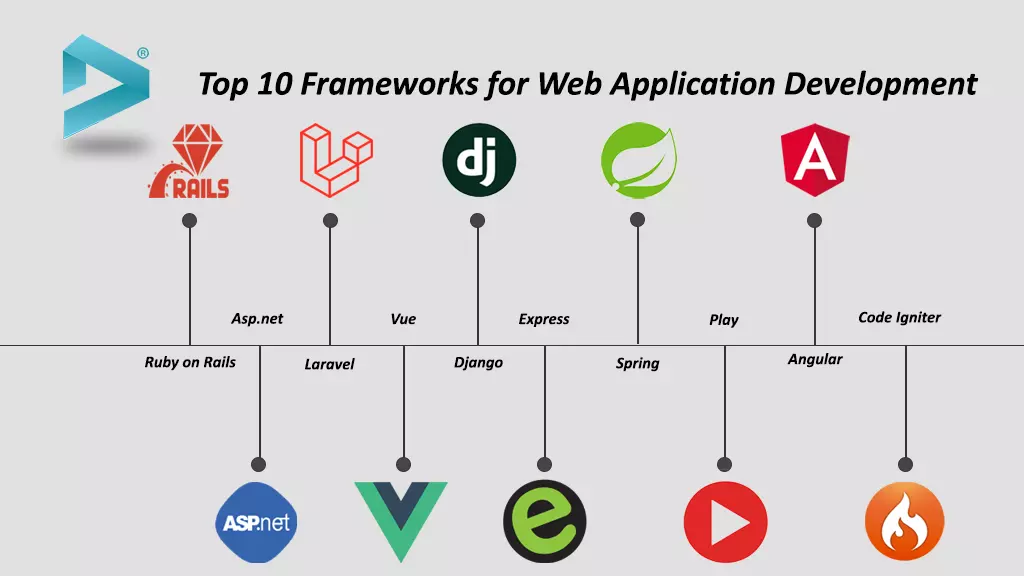Latest Technologies and Frameworks in Web Development
The field of web development is constantly evolving, driven by the need for faster, more efficient, and user-friendly websites and web applications. Keeping up with the latest technologies and frameworks is crucial for web developers to stay competitive in this dynamic industry. In this blog, we will delve into some of the most cutting-edge technologies and frameworks that are shaping the world of web development in 2023.
JAMstack Architecture
JAMstack, which stands for JavaScript, APIs, and Markup, is a modern web development architecture that emphasizes decoupling the frontend from the backend. With JAMstack, web developers build websites as a collection of pre-built, reusable components, making them faster, more secure, and easier to scale. Popular tools in the JAMstack ecosystem include Gatsby, Next.js, and Netlify, which enable developers to create highly performant and dynamic websites.
Serverless Computing
Serverless computing has gained significant traction in web development. It allows developers to focus solely on writing code without worrying about server management. Platforms like AWS Lambda, Azure Functions, and Google Cloud Functions enable developers to build scalable, event-driven applications that respond to user interactions in real-time. Serverless is particularly valuable for applications that experience unpredictable traffic patterns.
Single Page Applications (SPAs)
SPAs continue to be a dominant trend in web development. Frameworks like React, Angular, and Vue.js enable developers to build highly responsive and interactive web applications. With features like client-side routing and component-based architecture, SPAs provide a seamless user experience, reducing page load times and enhancing user engagement.
Progressive Web Apps (PWAs)
PWAs are web applications that offer a native app-like experience in a web browser. They can be installed on a user's device and work offline, thanks to service workers. PWAs are developed using web technologies like HTML, CSS, and JavaScript and are supported by frameworks like Angular and Vue.js. They are becoming increasingly popular due to their ability to provide fast, reliable, and engaging experiences across various devices.
WebAssembly (Wasm)
WebAssembly is a binary instruction format that allows developers to run high-performance code written in languages like C, C++, and Rust in web browsers. It opens up new possibilities for web applications by enabling computationally intensive tasks, such as video editing or 3D graphics rendering, to be executed with near-native performance directly in the browser.
GraphQL
GraphQL is a query language for APIs that provides more flexibility and efficiency compared to traditional RESTful APIs. It allows clients to request only the data they need, reducing over-fetching and under-fetching of data. GraphQL has gained popularity due to its ease of use and its ability to simplify data fetching and manipulation in web applications.
Containerization and Orchestration
Containerization technologies like Docker and container orchestration platforms like Kubernetes have become indispensable in modern web development. They enable developers to package applications and their dependencies into containers, ensuring consistent deployment across different environments. Kubernetes, in particular, simplifies the management and scaling of containerized applications, making them more reliable and resilient.
Machine Learning and AI Integration
Integrating machine learning and artificial intelligence into web applications is no longer a distant dream. With libraries like TensorFlow.js and pre-trained models, developers can add intelligent features such as natural language processing, image recognition, and recommendation systems to their web applications, enhancing user experiences and providing valuable insights.
Conclusion
Web development is a dynamic field that continually adapts to emerging technologies and user demands. Staying current with the latest technologies and frameworks is essential for web developers to create innovative, performant, and user-friendly web applications. As we move further into 2023, embracing these cutting-edge technologies will be key to building the next generation of web experiences. Whether you're building a JAMstack site, a serverless application, or incorporating AI, the possibilities are endless in the ever-evolving world of web development.


